










by Kathy Wolfe
When we think of animation, our thoughts may immediately think “Walt Disney,” but there’s much more to this form of photography than meets the eye. This week, Tidbits delves into the art of animation.
• Traditional animation involves pictures being drawn or painted on transparent celluloid sheets, or “cels,” which are then photographed onto motion picture film. Successive drawings create the illusion of movement, much like a sophisticated flip book. Each frame must be drawn by the animator, then filled in with paints.
• The human eye retains an image for about 1/10 of a second, so that the multiple images appearing in a fast sequence blend into a single moving image.
• Although Walt Disney revolutionized the animation industry, a French cartoonist named Emile Cohl is considered the “Father of Animation,” due to his creation of what is believed to be the first fullyanimated film ever made. Cohl made 700 drawings to create “Fantasmagorie,” drawing each frame on paper, then shooting them onto negative film. The film, which premiered in Paris in August, 1908, was projected at the rate of 16 frames per second and had a running time of 1 minute, 45 seconds. turn the page for more!










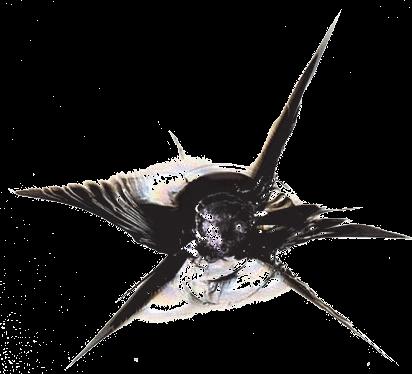

















is Published & Distributed Weekly By: CindAl Publishing Company 812 55th St. Vienna, WV 26105 e-mail: alan@tidbitsmov.com
Advertising: 304.210.3812
We reserve the absolute right to accept, reject, discontinue or refuse any advertisement personal or commercial that we deem may not be conducive for our publication or Tidbits®. The publisher does not assume any responsibility for the claims of its advertisers. Tidbits® is committed to remain a family oriented publication. www.tidbitsmov.com
• “Steamboat Willie” was the first Disney cartoon with synchronized sound, with music of a scene synced with the actions on screen. The 7 minute, 47 second black-andwhite film marked the debut of Mickey Mouse, seen piloting a side-wheeler paddle steamer. The animated short debuted at New York City’s Colony Theater on November 18, 1928, and was presented five times a day. (Decades later, November 18 became Mickey Mouse’s recognized official birthday.) Disney’s budget for “Willie” was $4,986.69. Walt Disney himself provided the voice for Mickey, mostly grunting, laughing, and squawking. When Walt Disney initially approached Louis Mayer, the head of Metro Goldwin Mayer, with an idea for a mouse cartoon, he was flatly refused. Mayer claimed that women were afraid of mice, and since they were the primary movie attendees, Mayer refused the idea and lived to regret that decision.
• Walt Disney had originally named his creation Mortimer Mouse, but Disney’s wife Lillian disliked the name Mortimer and suggested the name Mickey. Walt was the voice of Mickey until 1947.
• Although “Steamboat Willie” was renowned for its synchronized sound, it wasn’t the first cartoon to have it, only the first Disney cartoon with the feature. Brothers Dave and Max Fleischer began using synchronized sound in 1926 in their animated short “My Old Kentucky Home.” They produced 19 sound cartoons in those early days, using a sound-on-film process known as Phonofilm. The brothers introduced Betty Boop in 1930’s “Dizzy Dishes,” and the Jazz Age flapper cartoon character appeared in 90 shorts over the next nine years.

Toby Tidbits is hiding In this issue of TidbitsMOV

When you find him, to enter the weekly contest, please send us a message including your name, POSTAL MAIL address, the issue number you are referring to and which AD is hosting Tommy for the week! Visit www.tidbitsmov.com or send the answer with the above information to alan@tidbitsmov.com OR you may send us a private message to our Facebook page - @Tidbits MOV. PLEASE do not post the answer directly to the page - that ruins the fun for everyone. All winners will be drawn randomly from correct responses and will be posted weekly. As with all our contests, though you are welcome to play every week, you are only eligible for one winner per household per month.













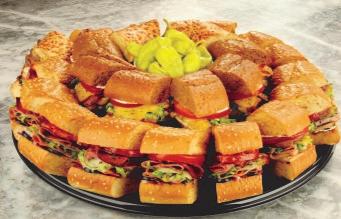











• The Fleischers achieved perhaps their greatest success when they debuted “Popeye the Sailor” in 1933. Popeye’s success even surpassed the success of Mickey Mouse cartoons. By 1938, the Fleischer’s company occupied four floors in a New York City building and had 250 employees. Their first full-length feature was 1939’s “Gulliver’s Travels.” Their success was further bolstered when they began animating Superman in 1941.
• The traditional method of cel animation is now obsolete, with drawings and backgrounds scanned into or drawn directly into a computer system. Software programs color the drawings. The 1990 Disney film, “The Rescuers Down Under,” was an animated adventure film chronicling the adventures of two mice, Bernard and Miss Bianca, who set out to rescue a young Cody in the Australian outback. The film made history as the first film to be produced entirely by the Computer Animation Production System (CAPS), which allowed the animators to digitally paint each frame, then place the cels over scanned background art.
• While 2D animation is created on a flat plane, 3D animation provides depth and volume, with more lifelike characters and environments, producing more texture and complex movements. Computer software is used to move a character’s body parts around, with the computer calculating the motion from each frame. In 1995, “Toy Story” became the first fully computer-animated fulllength film, created with the help of 3D technology. Originally planned to require eight animators and 53 computers, “Toy Story” ended up needing 33 animators and 300 computers. The forecasted budget was $17 million, but closed out at a cost of $30 million.
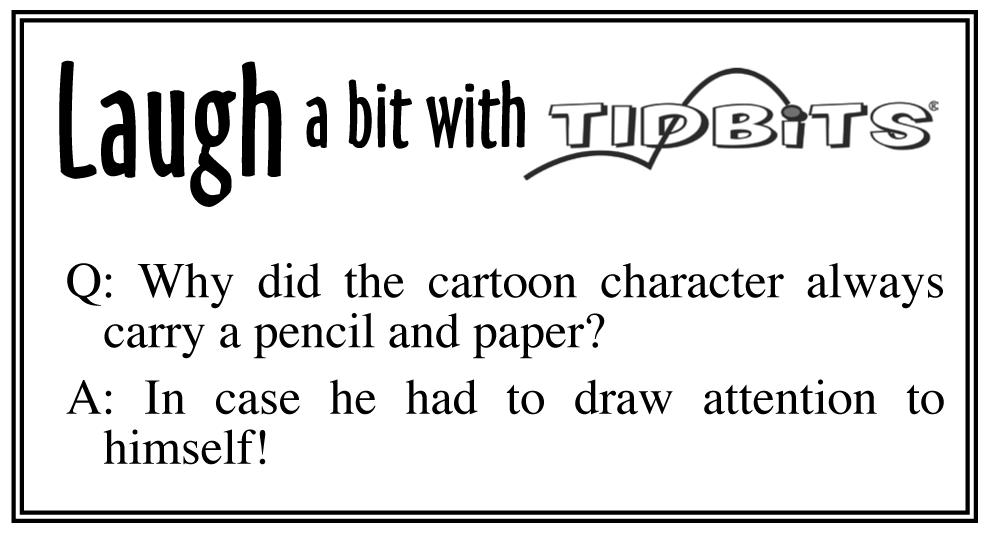



• Pocahontas was the first Disney princess created by a computerized coloring process. The 1995 film took five years to complete, while 55 animators worked on the character of Pocahontas alone. The movie was released on what is believed to be the 400th anniversary of Pocahontas’ birth. In the second part of the film, Pocahontas’ hair is gathered up into a bun, due to a shortage of artists’ time to draw her long flowing hair. The film earned two Academy Awards, one for the Best Original Song, “Colors of the Wind,” and a second for the Best Original Musical Score.
• The honor of most expensive animated film in the world belongs to Disney’s 2010 feature “Tangled,” based on the German Brothers Grimm fairy tale “Rapunzel.” The production took six years and cost the studio $274 million. Fortunately, the film earned $592 million worldwide in its initial release. The challenge of animating “Tangled” lay in the difficulty of creating a program for the character’s long hair. A hair simulation program called Dynamic Wires was finallyused
• Three animated films have earned an Oscar nomination for Best Picture. The first was Disney’s 1991 classic “Beauty and the Beast,” which lost to “The Silence of the Lambs,” although won two other Oscars. In 2009, Pixar’s “Up” was nominated for Best Picture and four other categories. “The Hurt Locker” edged out “Up” for the win. “Toy Story 3” was nominated for five Academy Awards in 2010, including Best Picture, but lost the big one to “The King’s Speech.”
• The first half-hour television program to feature only animation, “The Huckleberry Hound Show,” premiered in 1958, featuring three short cartoon segments – Huckleberry Hound, Yogi Bear, and Pixie & Dixie. In the mid-20th century, animation made its way into commercials with Tony the Tiger, Snap, Crackle, & Pop, and the bugs in the Raid commercial that claimed it “Kills Bugs Dead.”

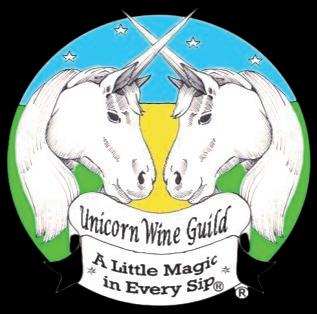



As the holiday season approaches, finding time for homemade meals becomes more challenging. That's why this Slow Cooker Mississippi Pot Roast is not just a meal, it's a gift to your future self. Make a double batch, enjoy half now and freeze the rest for one of those crazy-busy days ahead.
This clean version of the classic pot roast skips the usual processed flavoring packets, using whole food options instead. With just 20 minutes preparation, you can have this roast simmering in the slow cooker, leaving you with a savory, fall-apart meal that's perfect over mashed potatoes with a side of green beans or salad.
Yield: 6-8 servings
Total Time: 8 hours, 20 minutes
2 tablespoons cooking oil
3-4 pounds boneless beef chuck roast
1/2 teaspoon kosher salt
1/2 teaspoon black pepper
1/4 cup butter
1 cup yellow onion, coarsely chopped
3 tablespoon all-purpose flour
1/2 cup water
1 tablespoon Better than Bouillon Beef Base
1/2 cup liquid from a jar of pepperoncini
1/2 cup sliced or 5 whole pepperoncini
Ranch Herb Blend:
1 tablespoon dried parsley

1 tablespoon garlic powder
2 teaspoons dried chives
2 teaspoons dried dill weed
1 teaspoon onion powder
Heat the oil in a skillet over medium heat. Season the beef with salt and pepper. Add the beef to the hot skillet and sear until golden brown and lightly crusted on both sides, about 5 minutes per side. Transfer the seared beef to a 5- or 6-quart slow cooker. Leave the skillet over the heat.
Reduce the heat to medium-low and add butter to the skillet. Once melted, add onions and cook, stirring, until soft, about 4 minutes. Stir in the flour and cook for 1 minute. Meanwhile heat 1/2 cup water and dissolve the beef base in the water. Add the water and 1/2 cup pepperoncini liquid to the skillet, scraping up the browned bits. This mixture will quickly thicken into a lovely, velvety sauce. Pour this sauce over the roast in the slow cooker. On top of the roast and sauce, evenly distribute the pepperoncini, and sprinkle the ranch herb blend. Cover and cook on LOW for 8 hours or 4 hours on HIGH or until the beef is tender and easily shredded. After cooking, transfer the beef to a cutting board and rest it for 5 minutes. Next, shred with a fork. Serve with the cooking liquid drizzled over the top, alongside mashed potatoes, green beans and/or a green salad.
For Oven Roast Mississippi Pot Roast: Preheat oven to 275 F. In a Dutch oven, heat oil and sear roast. Remove roast, cook onions in butter, then stir in flour. Add water and pepperoncini juice and stir to combine. Return roast and add pepperoncini and Ranch Herb Blend. Cover and cook for 5-6 hours. Shred beef and serve with juices.
Freezer Instructions: Cool ingredients



completely, then transfer to a freezersafe container. Freeze for up to 6 months. Thaw overnight and reheat as desired.
If you're lucky enough to have leftovers, you're in for a treat! This makes the most delicious sandwiches. You've heard of French Dip?
Meet Mississippi Dippi! Serve shredded meat on buttered, toasted ciabatta rolls spread with mayonnaise and top with sliced provolone cheese melted under the broiler. Dip the sandwiches in the remaining jus from the crock pot thinned with beef broth if desired.
With this meal prepped and ready, you'll have one less thing to worry about during the busy holiday season.
***
Lifestyle expert Patti Diamond is the pennypinching, party-planning, recipe developer and content creator of the website Divas On A Dime Where Frugal, Meets Fabulous! Visit Patti at www.divasonadime.com and join the conversation on Facebook at DivasOnADimeDotCom. Email Patti at divapatti@divasonadime.com (c) 2024 King Features Synd., Inc.
A go-to comfort meal that's perfect for busy days and holiday prep.
PHOTO CREDIT: www.JasonCoblentz.com


This week, Tidbits fixes its focus on the big screen with facts about “Snow White & the Seven Dwarfs,” America’s first feature-length animated film.
• In 1916, 15-year-old Walt Disney attended a silent film version of the Brothers Grimm Snow White fairy tale in his hometown of Kansas City, and envisioned what would later become his famous classic. Six years after his successful 1928 introduction of Mickey Mouse, Disney began the production of “Snow White,” the first Disney princess.
• The critics thought Walt Disney was crazy to sink so much money into the film, and nicknamed it “Walt Disney’s Folly.” Disney borrowed heavily to produce “Snow White,” even mortgaging his house to finance it. The budget was $250,000, but by the end of things, the cost was $1.5 million, an enormous sum in the 1930s.
• “Snow White” took about three years to create, from 1934 to 1937. More than 750 artists completed upwards of 2 million sketches.
• The early sketches of Snow White illustrated her as a blonde. But the script changed her with the words of the Magic Mirror: “Lips red as the rose, hair black as ebony, skin white as snow.”
• Several names were considered for the seven dwarfs including, Scrappy, Hoppy, Blabby, Crabby, Flabby, Gabby, Gloomy, Shifty, Stubby, Dizzy, and Weezy. In the end, those chosen were Grumpy, Happy, Sleepy, Bashful, Sneezy, Dopey, and Doc. The mute Dopey was initially to be a talkative chatterbox, but when producers couldn’t find a voice they felt matched his demeanor, he became the silent dwarf. (Continued page #7)













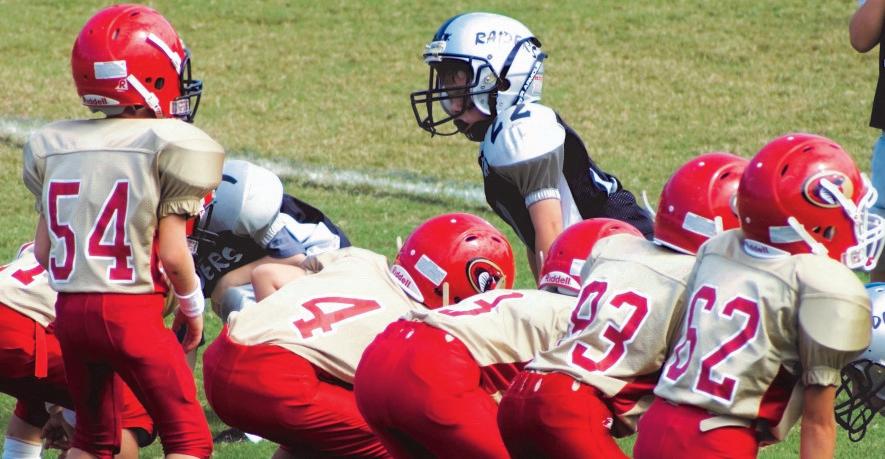





































DEAR PAW'S
COR-
NER: My next-door neighbor puts out food for all of the outdoor cats in the area. That includes a lot of strays who are now mingling with the cats who have homes. She even buys specialty cat food if she thinks they don't like what she's offering. I think this is a dangerous situation, because the cats may be exposed to diseases from the strays. What should I say to her to stop this? Concerned Next Door
DEAR NEXT DOOR: If you're on polite terms with the neighbor, go over and talk to her about the issue, calmly. Explain your concerns and let her know that some of those cats have homes and owners who may not be happy about their cats being fed somewhere else.
However, if you're not comfortable speaking directly with her or if the conversation accomplishes nothing you will need to consider other routes.
If you have a neighborhood HOA, bring up the issue in a community meeting. The cats' owners may not be aware of what's going on. If you don't have an HOA, try discussing the issue with the other owners directly. Explain that their cats are at risk of contracting diseases common among strays, like FIV (feline immunodeficiency virus) or could be injured in a territorial fight. The least painful solution is for cat owners to keep their outdoor cats inside and away from the neighbor.
Then contact your local animal control. Now, animal control doesn't always intervene in these situations, but if they feel that the strays are a danger to other pets, they may come out and try to trap and remove them to a shelter, or at least have a talk with your neighbor about putting food out. How would you handle a similar situation? Tell us about it at ask@pawscorner.com.
(c) 2024 King Features Synd., Inc.






(continued):
• Walt Disney himself personally chose 18year-old Adriana Caselotti for the voice of Snow White. She was paid $970 for her work on the film (about $21,000 in today’s dollars). Her contract with Disney forbade most further acting work, with Walt stating, “I’m sorry, but that voice can’t be used anywhere. I don’t want to spoil the illusion of Snow White.” She also was not even credited for the role. Caselotti branched out into opera instead. At age 75, she recorded “I’m Wishing” for Disneyland’s wishing well attraction.
• The Evil Queen and the old witch were voiced by the same actress, Lucille LaVerne. The old hag’s voice was completely different from the queen’s and was achieved by Lucille removing her false teeth
• Determined to depict Snow White’s animal friends as accurately as possible, Disney brought in an assortment of live animals into the studio for animators to study







• The songwriting team composed 25 songs for the film, but just eight were actually used. “Snow White” was the first movie to offer a music soundtrack for purchase
• Los Angeles’ Carthay Circle Theatre was the site of the premiere of “Snow White & the Seven Dwarfs” on December 21, 1937. The nationwide release followed on February 4, 1938. It was the highest-grossing film in history for a short time, until 1939’s “Gone with the Wind” surpassed it. Adjusted for inflation, it still remains in the Top 10 box office performers. The movie was so successful that Walt was able to purchase 51 acres of land in Burbank, California, to build new studios, those that are still in use today.
• Disney received an Honorary Academy Award for the film – one regular figurine and seven miniature ones. It was first rereleased in 1944, followed by seven more re-releases in 1952, 1958, 1967, 1975, 1983, 1987, and 1993. In 1994, “Snow White” was released for the first time on home video.


* "I have to wear my hair tied back for work. With all the ponytails, I get lots of little broken hairs that stick up all over my head when it's very dry or very humid, especially when I go from a wet, yucky outside to a dry, heated inside. I have tried lots of styling products that don't work very well. Then a co-worker suggested a fabric softener sheet. I can't believe it, but it works." P.G. in Michigan

* If you have an ink stain on fabric, try blotting it with hairspray. Saturate the ink spot with hairspray and blot using a clean white cloth or non-decorated paper towel. Repeat until all the ink is gone. Make sure you test on an inconspicuous area first.
* For every degree you lower your thermostat during the heating season, you generally reduce your energy costs by 3% daily. Also, turn down the temperature setting on your hot water heater.
* Here's a no-fail strategy for raking up leaves: Rake leaves into a single long line, preferably onto a sidewalk. Then turn a large garbage can on its side and sweep the leaf pile
into the can, breaking to empty leaves into bags as needed. The raking goes much quicker when done in "stripes." And bagging is faster as well.
* "I have one of those big wall calendars for work. When the year is over, the kids like to cut out the months into bingo cards. They use stickers to create both the bingo cards and the puller's cards (the individual days and the different kinds of stickers). It's a fun craft that uses their brain cells, plus recycles the paper calendar." Y.R. in Arizona
Send your tips to Now Here's a Tip, 628 Virginia Drive, Orlando, FL 32803.
(c) 2024 King Features Synd., Inc.







